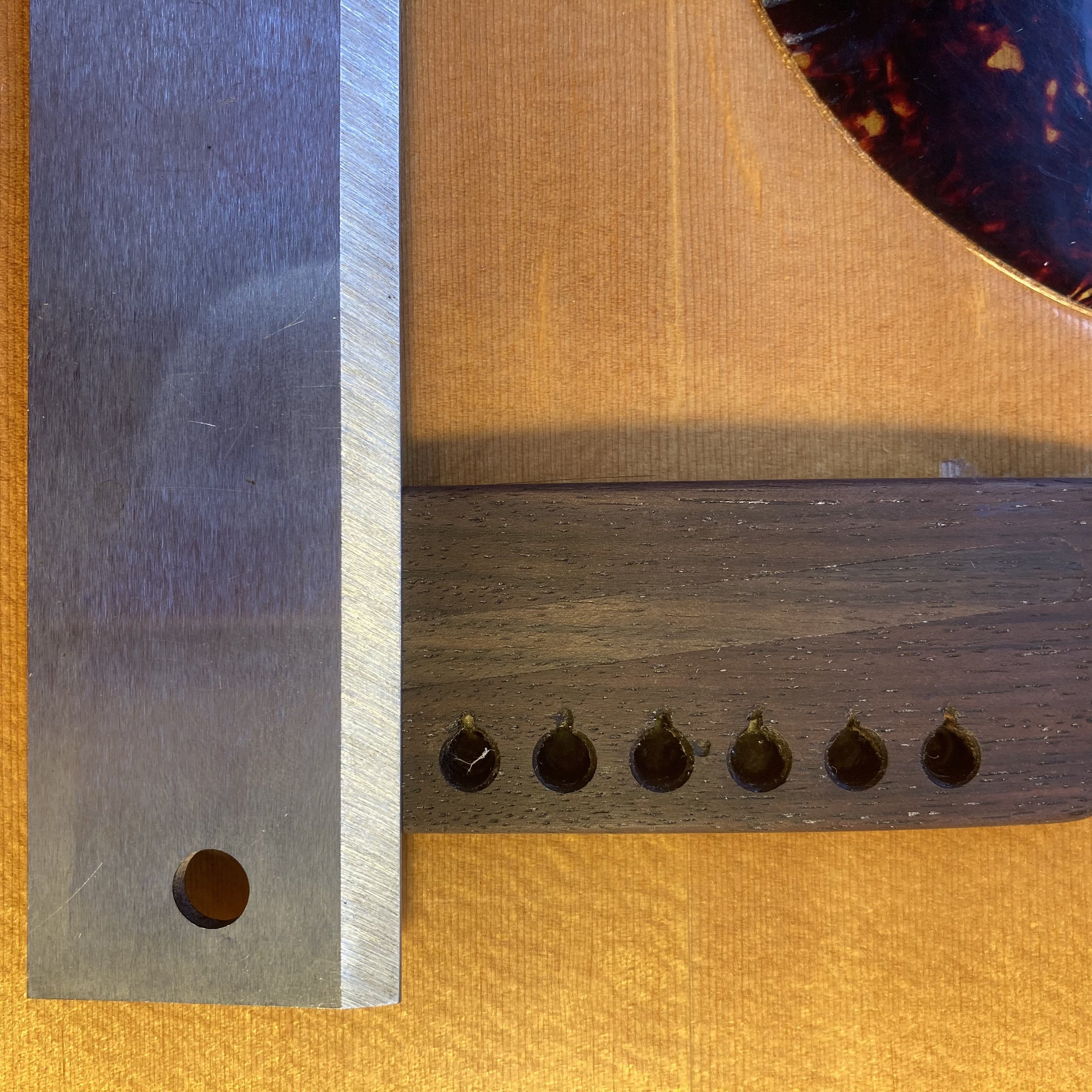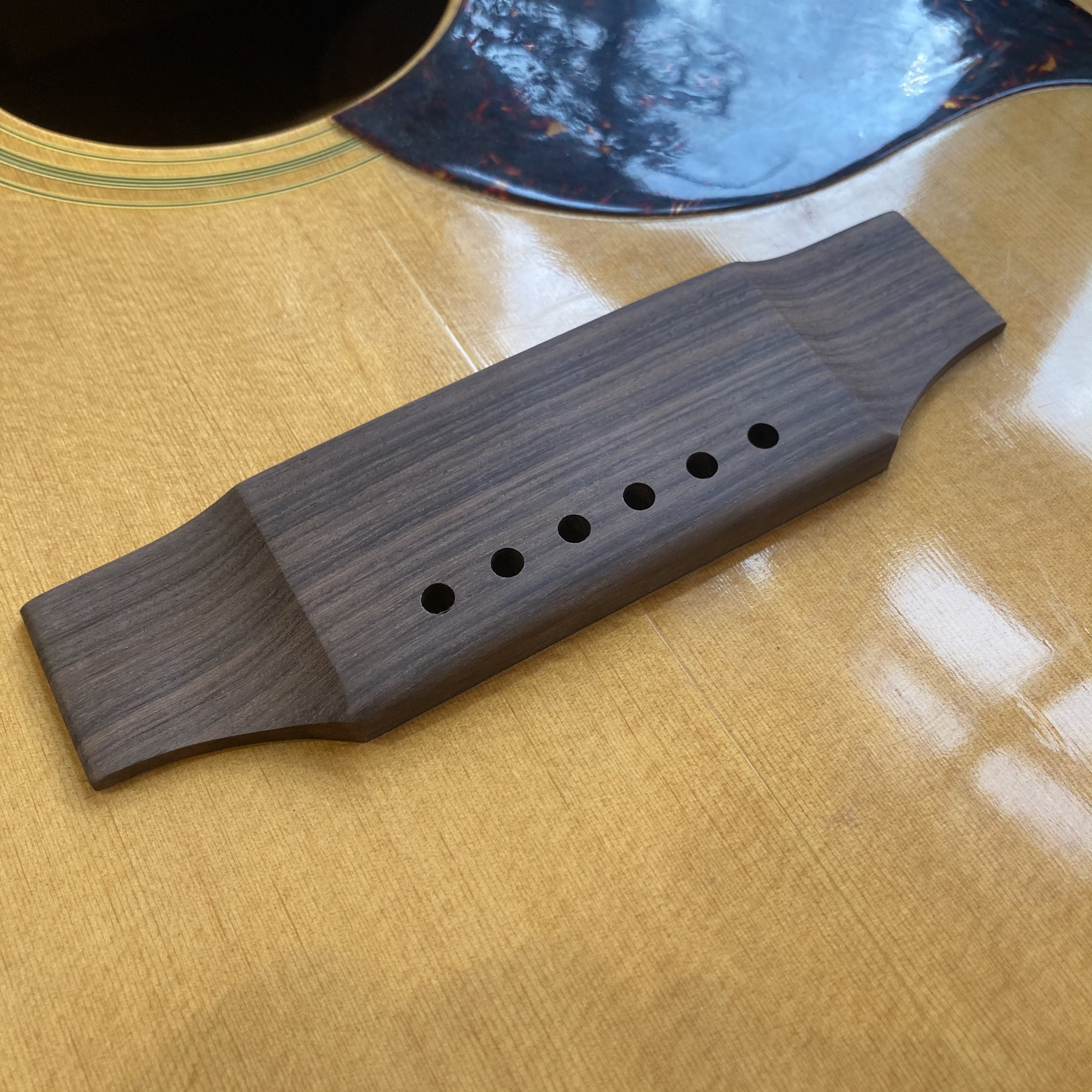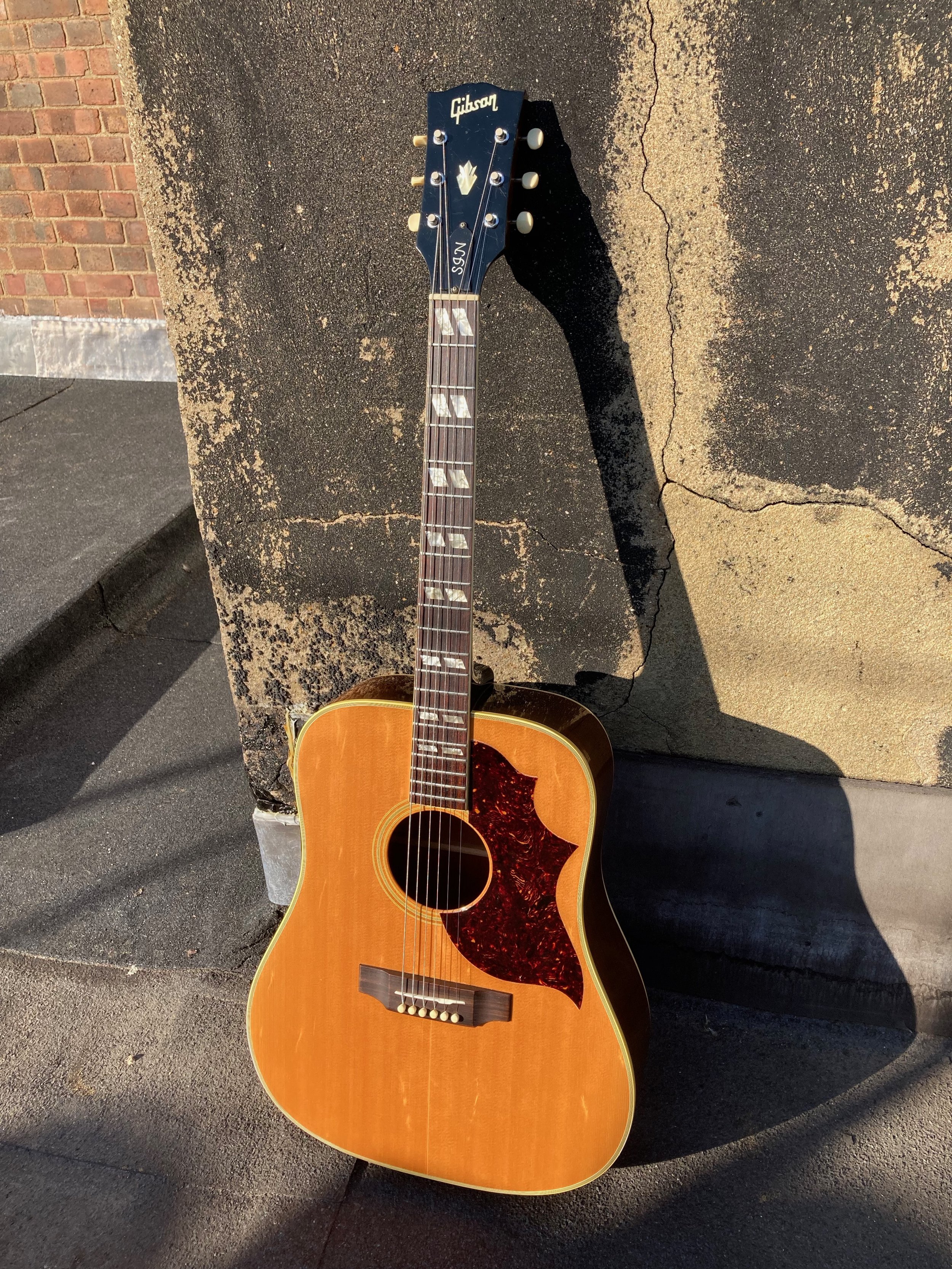Project of the Year goes to - This Crazy 1970 Gibson SJN Southern Jumbo - Part 3
Great so here he goes, the pickguard is aligned and glued back in place. We can’t use the old adjustable saddle anymore so begin by filling in the gap left in the bridge with a reasonable matching piece of rosewood. Here’s where it really pays to double-check everything folks, but we’ve all been there. Just as I was beginning to fit the bridge I noticed something seemed off about the spacing. Hadn’t paid it much mind before as other issues made it basically vanish, but sure enough, checking the hole spacing showed a big discrepancy between the bass and treble side. Was this originally some attempt to correct the wonky bridge? Who knows, but the spacing had to go so things could be centered on the neck properly again, and that means new bridge time. So found a nice rosewood blank block and began cutting and shaping. To be fair, I much preferred this method anyways, I think it’s a much more complete solution plus I can use a better quality cut of wood and shape it nicely with a pleasant vintage style bevel on either side.
Once it had all been carefully test fit several hundred times, it was scored gently and affixed to the top. Once fully cured and hardened, I went to work on the saddle length, width, and obviously placed for correct compensation. Here it is after being cut, with a properly radiused bone saddle nearly formed to fit as well.
Once that was good to go, it’s time to get gown to the long slow business of very, very carefully rendering the edges of the bottom so things are back to normal and as well hidden as can be. Don’t forget, we’ll be using as much of the original finish as possible, and blending it together in the gaps!
Here it is, at long last and after many months of work, this Gibson SJN Southern Jumbo is once again in one piece, and performing better than ever! The top is back to being as it should be; stiff, strong, and with a very slight radius. The new bridge works wonderfully with the strings now properly aligned, spaced, and intonated.
The guitar sounds rich and full, with both single notes and chords resonating deeply and jumping out the guitar now! I was very pleased to be able to keep any disruption to the finish to a minimum and you can only see the history if you look very closely. The colouration, finish checking, as well as the slight ‘yellowing’ these vintage guitars develop, are still very much present.
This old Gibson will now be singing happily long into the future, hope you enjoyed seeing the project progress!


















